An Intro To Streaming Hi-Fi Audio
One of the three primary areas of focus in my upcoming user guide is streaming high-fidelity audio. In today’s blog post, I’d like to delve into the basics of this exciting and relatively new way to listen to music and explore a couple of approaches to hardware and software. I guess the best place to start is by defining a few terms.
Streaming audio is delivered via a network rather a local physical storage device. Audiophiles are familiar with the most common digital music storage formats: optical discs (CD, DVD, SACD, and Blu-ray Discs), hard drives, USB memory sticks, and SSD (solid state drives). These formats house the digital music. You have control over what you play, when you play it, and where it is reproduced. Our hobby has traditionally been based on physical media. Streaming upends the traditional model. Listening to streaming music depends on a reliable and robust network connection to the servers housing the content licensed by TIDAL, Amazon Music HD, Apple Music, Qobuz, and Pandora from labels large or small. Lose the network connection — and after the buffer is used up — the music stops. I’ve been experiencing exactly this sort of interruption because my Spectrum modem has been switching from blue (working normally regularly) to red (malfunction) over the past couple of weeks. The Spectrum service people are coming at the end of the month to determine the cause of the problem. In the meantime, I have to resort to playing discs or other local music files.
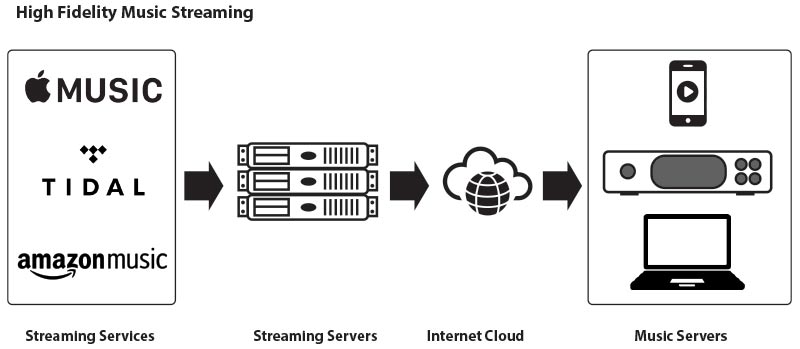
The required hardware to stream high-fidelity music ranges from a generic Apple Mac, iPad, or iPhone, equivalent Windows-based device, or other generic computer — think Raspbery Pi — to dedicated consumer electronics devices like the Bluesound’s Node 2i, which wraps a purpose built computer inside an audio component container. In my Culture and Digital Media course at CSU Dominguez Hills, I introduce the world of digital media by diagramming and labeling all of the parts of a generic modern computing system. There’s the all important CPU (Central Processing Unit), which is augmented by RAM, Busses, Power Supply, I/O Devices, and Various Storage Devices. Typical Input and Output devices include: a mouse, keyboard, monitor, printer, modem, Ethernet port, scanner, or sound card. Hooking all of this stuff together, plugging it into the wall socket, and turning on the power doesn’t mean anything will happen. In fact, the screen will remain dark until the appropriate operating system — the software — boots up the machine.
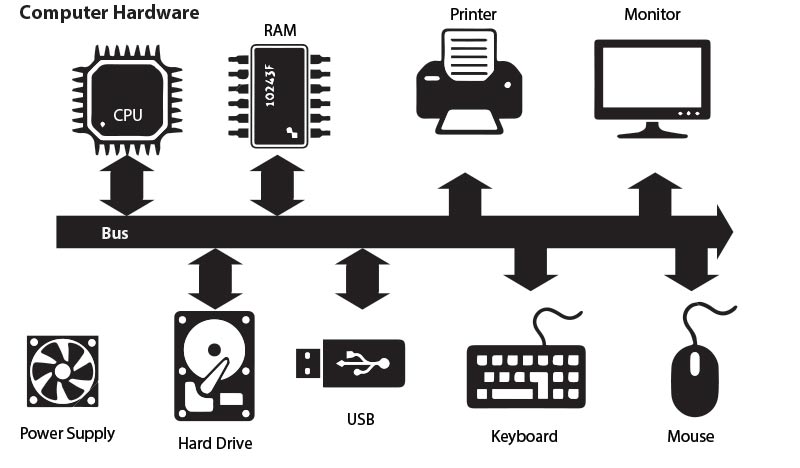
Software is what makes computer hardware useful and there are many different levels of software. There’s code inside the chips, there’s machine level code, low level code for basic operations and high level code to operate the human – machine interface. When consumers think about code we typically gravitate to Mac OS or Windows-based personal computers. Those operating systems take care of the general housekeeping chores of a our computers. If we want our hardware to actually do something specific, then we search out, acquire, and run an application program. There are millions of apps dedicated to virtually any specialty we can imagine. I’ve mentioned that I’ve been learning to fly gliders and airplanes over the past 8 months. It’s been a amazing to see how digital instrumentation, display technologies, GPS, and the “glass cockpit” have transformed this field from when I first sat in a small, private airplane 25 years ago. The same is true of our music hobby. We have to learn enough about what music software is available, its application and functionality, and whether it suits out needs — and whether it fits within our ecosystem. Software that takes a degree in computer science is not likely to be welcomed by most audiophiles.
Questions
This exciting area of music listening brings with it a lot of questions. For example:
- Does the fidelity of streaming services vary?
- Can you stream multichannel audio?
- What’s better: a computer, dedicated device, or consumer device?
- Does streaming high-resolution really matter?
If you have questions you would like answered, please add a comment to this page. As I dig deeper into the research and writing of the new book, I’ll cover as many as I can. Thanks.
Almost There – Only About $500 Needed to Reach the Goal!
We’re almost there. Since my last update, almost 50 new backers have added their names to the campaign. If learning about streaming, downloads, and personal audio — AND a bunch of other stuff about high end audio — is on your agenda, my Kickstarter campaign for A User Guide to Streaming, Downloads & Personal Audio is for you. There are only 12 days left. Thanks to all of you backers. 245 backers have signed on and we are 95% of the way therel. Will you be the one that puts us over the top? Please consider backing this campaign today!
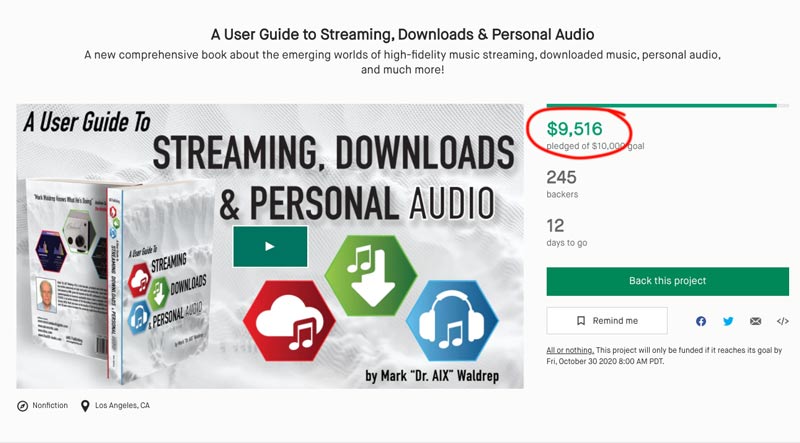
I’m asking all of my readers to select a reward, make a pledge, and become a backer of this campaign right away.
I would love to see another 50 backers visit the KS page, select a reward, and make a pledge before the end of the weekend. And if you haven’t yet secured a copy of the first book, Music and Audio: A User Guide to Better Sound, now would be the perfect time — just before the holidays.
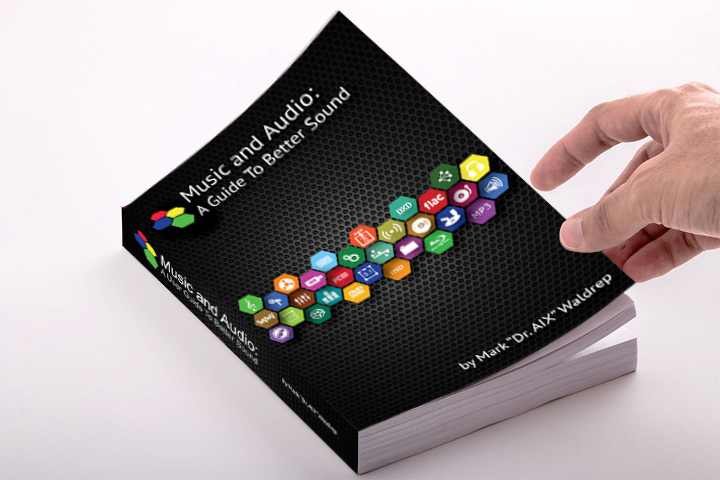
A few backers have written to ask if they will have to wait for delivery of the existing book or the 5 AIX Records downloads. The answer is no. At the conclusion of the campaign on Friday, October 30, 2020 at 8:00 PDT and assuming we’re successful at reaching out goal, I will begin distributing any rewards that include the Music and Audio: A User Guide to Better Sound or the 5 AIX Records downloads from iTrax.com.
Thanks again for your support. Please make a pledge, help spread the news about the campaign, and stay safe in these challenging times!

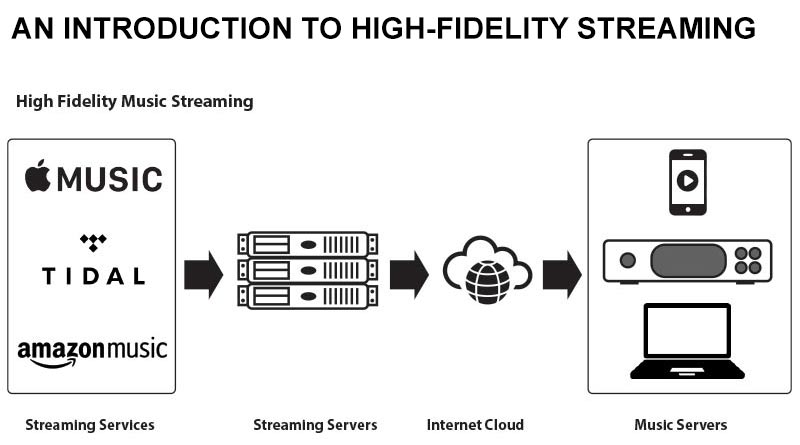
“Spectrum service people are coming at the end of the month” WTF? That’s not service, that’s contempt of customer. Thank god for Ajit Pai!
I’ve tended to have a problem deciding what is streaming and what isn’t. Am I streaming when I watch a movie on my PC that’s stored on another PC a few feet away? To me, that’s just playing a movie, reading a file, that’s on a disk I access over my LAN. It seems fundamentally different than something like youtube or Netflix, though I realize that might be an error in thinking.
Have a good one,
rob
No, you’re right. The key for me is the transmission of the data via a network…WAN like Netflix or LAN like you house.
Spectrum customer service is atrocious, only slightly better than AT&T Wireless. I’ll stick to optical discs though I see that window closing completely real soon. Manufacturers are not making that many component CD/SACD players now across a product line or priced affordably in reach.
I am looking forward to eventually receiving the book and the learning form it.
One element that will be nice to explore is gapless playback. It might only be relevant for classical music but for that is a deal breaker and that for example made me cancel my Qobuz and iDagio’s test subscriptions.
Very good comment and something that annoys me as well. I’ll have to if any service manages to keep movement playing seamlessly. Have you checked Primephonic?
Yes I have tried Primephonic and I saw that, as far as I am concerned, they have the best classical library organization/linking to other recordings of the same work etc.
However they do not have a Linux (yes I am one of those people) player and going via the browser there seem to always be conversions. I gravitated, at this stage, to Spotify Linux player which I send directly to a Benchmark DAC via ALSA, shutting down Pulse Audio. Inconvenient yes but I have been impressed at audio quality. I have compared it with known provenance flac recordings I own and to my surprise there is very little or no difference at the highest Spotify quality setting. Also to my satisfaction, I have never seen anything in Spotify, that has different gain as evidenced by volume which I take as a surrogate of “they do not mess with what they get from the labels”.
Needless to say that discovery, browsing, linking etc. I get elsewhere (including Primephonic) than Spotify who even though they have a very extensive classical library they have no respect or mind share for the classical listener.
Perhaps now you might understand why I am eagerly awaiting for your new book!
Dear Mark. The following question you pose in your excellent blog post is an interesting one: Does the fidelity of streaming services vary? I have tried to find objective information on the possible difference between Spotify Premium (ogg vorbis 320 kbps) and CD quality streaming. Technically these are different, but can we hear the difference? I must confess that I can’t.
Pasi, it does vary. All of the providers get the same digital files and then implement their own distribution schemes with different mastering, encoding, and streaming codecs. Some are better then others.